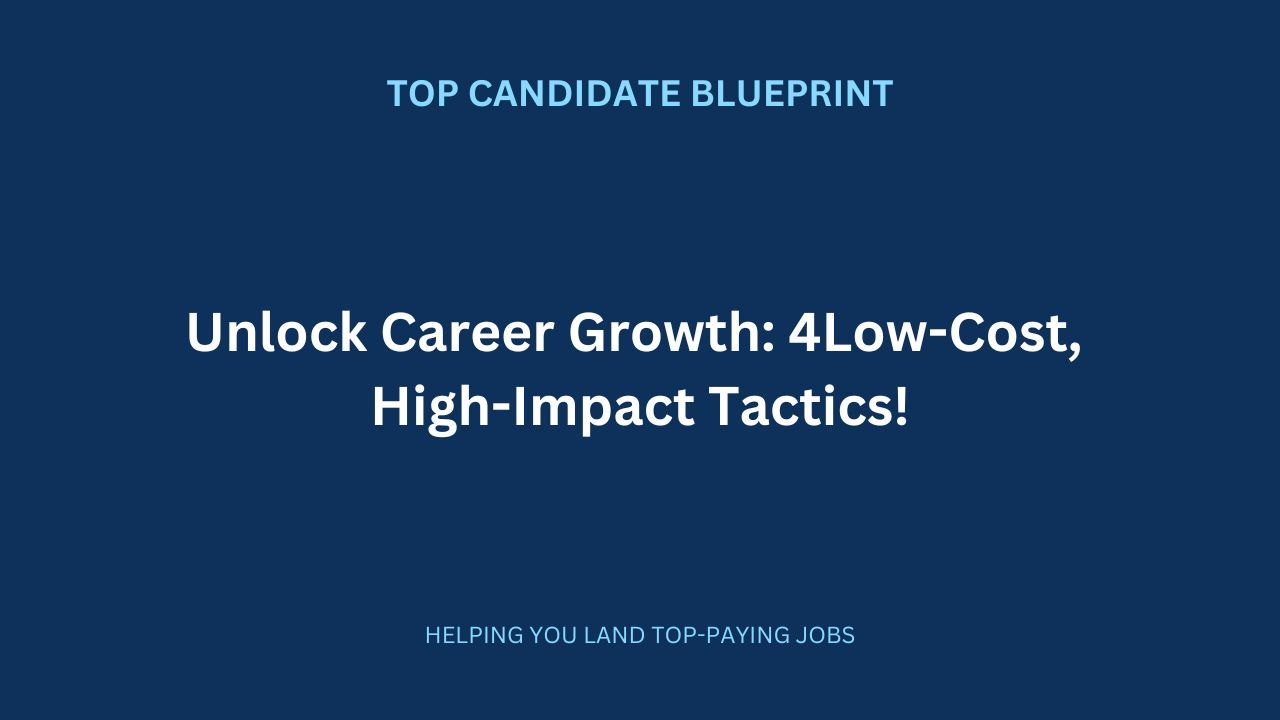
Unlock Career Growth: 4 Low-Cost, High-Impact Tactics!
4 tactics to build your skills to bridge the gap and make your career change happen.
Even when you know that changing careers is the right thing to do, you ignore it, because I know you are worried about:
- Starting all over again
- Taking a pay cut
But here is the truth: Not all career changers need to go through this.
Once you understand the 4 tactics to fill your skills gap, you will see that it’s possible to get a job to grow fast and earn more.
Anyone can change their career path - when you start believing in yourself.
One of my students, Francois, transitioned from the aviation industry. He moved from an operations role to software sales.
To change your career, you first need to make sure you don’t make a few of the most common mistakes:
Mistake #1: Ignoring opportunities at your current company.
Mistake #2: Not believing in your current skillset to start a side project.
Mistake #3: Neglecting the power of genuine networking to gain clarity.
Mistake #4: Taking an expensive course without knowing if this is the right move.
People often make mistakes when they don't plan a career change. They start applying randomly, hoping for the best, without bridging skill gaps. As a result, they keep themselves stuck in jobs that neither help them learn nor earn.
So, here’s how to fix it: 4 ways you can bridge the gap and make your career change happen.
Tactic #1: Explore options at your current company
The first step in your career change is validating your next move in a low-risk environment.
You know the people and already have a network.
It’s human nature not to value what we already have, so we look outside.
Instead, explore the opportunities inside your company and have a chat with your manager.
Example script for the chat with your manager: I want to build a long-term career here, and it’s been a great learning experience so far. I reflected and want to learn more about {digital marketing}. I spoke with Nicki from the marketing team and wanted to work shadow and learn more about it. I will make sure this will not impact my current work, and I will plan to meet all deadlines. Would you be able to support my career growth and learning goals?
This is how I switched from finance to marketing early in my career.
Tactic #2: Build a side project based on your skills
This approach will take more time and dedication to make it happen.
You will need to sacrifice your evenings and weekends to explore this option.
Most people overthink and try to perfect everything before launching their side project.
All you need is to define these 4 elements:
Problem: What problem do you want to solve?
Customer: Who will be willing to solve this problem?
Solution: How much time and money are they willing to invest?
Outcome: Will your customer make more money or save time as a result?
Before you do anything, confirm the idea by talking to at least 10 people who would be your target customer.
You will know if you are interested in this area and if you would like to open your own business in the long term. The Internet has glorified being an entrepreneur. Before you jump the gun, do a test run to learn about the option and yourself.
Tactic #3: Network to seek information, not referrals
Asking people for advice makes them feel valued. You demonstrate that you value their experience and have a genuine interest in learning more.
This will allow them to give unfiltered advice and help you to get more information.
Most people, when they network, make two mistakes:
- Jump and ask for a job opportunity
- “Tit for tat” strategy - if you help me with this, I will help you with that.
Everyone in the digital world is looking for a real connection to learn and grow together. And we are becoming more picky who we want to spend time with, aka the vibe check.
The key for me is deciding who I spend time with and how they make me feel after our meeting.
Next time you network, ask these questions to build deep connections:
- If you had to start your career again in {machine learning}, what would you do differently?
- What resources would you recommend to someone who wants to break into {machine learning}?
Once you have read the recommended resources, follow up and share what you learned. This is the quickest and most genuine way to build long-term relationships.
Tactic #4: Take online courses only after researching the role
And finally, the last step to career change is to take an online course.
You should only invest your money and time once you know more about the role. You can do this by exploring yourself and talking to people who have done it.
Most people take online courses and mid-way realise it’s not for them and end up wasting time and money.
Don’t be like most people and instead implement one of tactic 1-3 above
